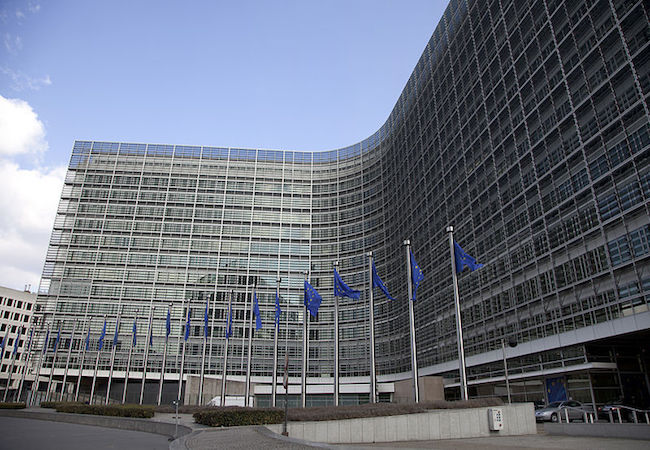
By Jasna Čošabić
General Data Protection Regulation is about to be applicable from 25 May 2018. Its long-arm teritorrial reach brings obligations not only to EU establishements, but to US based companies as well. Global connection through internet especially underlines the likelihood of such broad application and it will impact US businesses. One of the prerequisits for safe transfer of data between the EU and US is already accomplished by the EU-US Privacy Shield agreement. The European Commission has considered this agreement as providing adequate guarantees for transfer of data. Under Privacy Shield scheme companies may self-certify and adhere to principles stated therein. Yet, there is still less then 3000 companies in the US participating in the Privacy Shield. But GDPR safeguards have still to be followed. Below, we shall look at some of the most profound aspects of compliance with GDPR for the US (non-EU) based companies.
- Data protection officer
Although it is not obligatory pursuant the GDPR, it is advisable that a company appoints a data protection officer (‘DPO’) or designate that role to a specific position in the company. DPO can also be externally appointed. There may be a single DPO for several companies or several persons designated with DPO role in one company. The position needs not necessarily to follow such a title, but it may be a privacy officer, compliance officer, etc. Such person should possess expert knowledge about the GDPR and data privacy, and may have legal, technical or similar background. GDPR was not specific as to requirements of that person, apart from possesing expert knowledge. Role of DPO is to inform, monitor, advise, the controller, processor or employees, to cooperate with supervisory authority, provide training of staff, help in performing data protection impact assesment.
- Data Protection Impact Assesment
The further step that companies affected by the GDPR including US companies should do in order to evaluate the risk of data breach is to perform a data protection impact assesment (‘DPIA’). DPIA is a thorough overview of the processes of the company, and can be done with the help of data protection officer. It may include a form or a template with a series of questions, which have to be answered for each processing activity. DPIA has to be detailed and cover all operations in the company. The function of DPIA is to predict situations in which data breaches may occur, and which include processing of private data. DPIA should contain, pursuant to Article 35 of the GDPR, a systematic description of the envisaged processing operations and the purposes of the processing, an assessment of the necessity and proportionality of the processing operations in relation to the purposes, an assessment of the risks to the rights and freedoms of data subjects referred to in paragraph, the measures envisaged to address the risks, including safeguards and security measures. DPIA is a very useful way of showing compliance and it is also a tool that would help to company at the first place, to have an overview of processing activities and an indication of where a breach could happen.
- EU representative
A US company (non-EU based company) has to appoint an EU representative if its business relates to offering of goods or services to natural persons in the EU, including even free goods or services, or when processing is related to monitoring of behaviour of data subjects in the EU. Behaviour may include monitoring internet activity of data subjects in order to evaluate or predict her or his personal preferences, behaviors and attitudes. EU representative is not obligatory when the processing is occasional or does not include processing on a large scale of special categories of data such as genetic data, biometric data, data concerning health, ethnic origin, political opinions, etc. and when it is unlikely to result in a risk to the rights and freedoms of natural persons. However, given that the exceptions from the duty of designation of EU representative are pretty vague, in most cases companies whose operations are not neglectable towards persons in the EU would have to appoint a reprsentative. Location of such representative would be in one of the EU Member states where the data subjects are located. Representative should perform its tasks according to the mandate received from the controller or processor, including cooperating with the competent supervisory authorities regarding any action taken to ensure compliance with this Regulation, and he/she is also liable and subject to enforcement in case of non-compliance.
- Consent matters
GDPR is overwhelmed with one key word of respect the privacy: consent. If companies wish to process data of natural persons that are in the EU, they must first obtain consent to do that. Consent must be freely given, informed, specific and unambigous.
Freely given consent presupposes that data subject must not feel pressured, or urged to consent, or subjected to non-negotiable terms. Consent is not considered as freely given if the data subject has no genuine or free choice. Data subject must not feel reluctant to refuse consent fearing that such refusal will bring detrimental effect to him/her. If the consent is preformulated by the controller, which is usually the case, the language of the consent must be clear and plain and easily understandable for the data subject. Further, if there are several purposes for the processing of certain data, consent must be given for every purpose separately. Consent must be specific and not abstract or vague. Silence, pre-ticked boxes or inactivity is not to be considered as consent under GDPR.
Informed consent means that data subject must know what the consent is for. He/she must be informed about what the consent will bring and there must not be any unknown or undetermined issues. It is a duty of controller to inform data subject about scope and purpose of consent, and such information must be in clear and plain language. But, one must be careful that, as today in the world of fast moving technologies we face overflow of consents a person has to give in short period of time, there may be an occurrence of ‘click fatigue’[1], which would result in persons not reading the information about the consent and clicking routinely without any thorough thinking. So, the controllers would have to make, by their technical design, such form of a consent, that would make the person read and understand his or her consent. It could be a combination of yes and no questions, changing of place of ticking boxes, visually appealing text accompanying consent, etc.
Consent must be unambiguous, or clearly given. There must not be space for interpretation whether consent is given for certain purpose or not. As to the form of the consent, it may be by ticking a box, choosing technical settings and similar (Recital 32 GDPR).
Data subject gives his consent for the processing of his personal data. However, companies have to bear in mind that data concept in the EU is broadly understood, and that it includes all personally identifiable information (PII), ranging from obvious data such as name and postal address, to less obvious data, but still PII covered by GDPR, such as IP address[2]. On the other hand the IP address is not that clearly considered as PII in the US. In that regard, the protection in the US must be stricter, obliging US based companies to also apply broader EU standards.
- Privacy by design implemented
Privacy by design is a concept which brings together the legal requirements and technical measures. It is a nice and smooth way of incorporating law into technical structure of business. Privacy by design, if applied properly at the outset, shall ensure the compliance with the GDPR requirements. It should point out to principles of data minimisation, where only data which is necesssary should be processed, storage limitation, which would provide for a periodic overview of storage and automatic erasure of data no longer necessary.
One of the ways of showing compliance through the privacy by design is ‘pseudonymisation’. Pseudonymization is, according to GDPR, referred to as the processing of personal data in such a manner that the personal data can no longer be attributed to a specific data subject without the use of additional information. Such additional information must be kept separately, so that it cannot be connected to identified or identifiable natural person. Pseudonymisation is not anonymisation and should not be mixed with it. Anonymisation is a technique which results in irreversible deidentification, and since it completely disables identification it is not subject of data protection under GDPR. Pseudonymisation only reduces the likability of a dataset with the original identity of a data subject, and is accordingly a useful security measure[3].
- Binding corporate rules
Binding corporate rules (‘BCR’) include set of principles, procedures and personal data protection policies as well as a binding clause adopted by the company and approved by competent supervisory authority. Adopting binding corporate rules is not a simple process but means being on a safe track. It is one of the safeguards envisaged by the GDPR. BCR should include according to Article 47 of the GDPR, the structure and contact details of company, categories of personal data, the type of processing and its purposes, application of general data protection principles (such as purpose limitation, data minimisation, limited storage periods, data quality, data protection by design and by default, legal basis for processing, processing of special categories of personal data, ..), rights of data subjects[4], the tasks of data protection officer, complaint procedures, mechanisms for reporting to the competent supervisory authority, appropriate data protection training to personnel, indication that BCR are legally binding. BCR should additionally be accompanied with privacy policies, guidelines for employees, data protection audit plan, examples of the training program, description of the internal complaint system, security policy, certification process to make sure that all new IT applications processing data are compliant with BCR, job description of data protection officers or other persons in charge of data protection in the company.[5]
- Make your compliance visible
Well, if your company has performed all of the above, it has to make it visible. Companies, that are covered with the GDPR, not only do they have to comply, they have to show that they comply. GDPR puts an obligation on controllers to demonstrate their compliance.
From the first contact with the controller, the website must give the impression of compliance. BCR, privacy policies, DPO contact details must be visible in order that data subject may address him in case of data risk or breach. EU representative’s name and contact must be put forward in order to be accessible by the supervisory authority in the EU. Contact form for data subjects with options for access, right to object, erasure, rectification, restriction, should be there. Organisational chart of the company, flow of data transfer demonstrated by data flow mapp.These are only some of the most imporant features that have to be followed.
Non-compliance is a very costly adventure. The adventure that businesses will try to avoid. With systematic planning and duly analysing the necessity of compliance with GDPR, and with clearly defined processes, US companies can put many benefits for the business and attract and encourage data subjects in the EU to freely entrust their data to them. This is a thorough process, but worth accomplishing.
References:
[1] Article 29 Working Party Guidelines on consent, p. 17
[2] According to judgment of the Court of Justice of the EU of 19 October 2016, in case C 582/14,
[3] Article 29 Data Protection Working Party, Opinion 05/2014 on Anonymisation Techniques adopted on 10 April 2014 p. 3
[4] https://moderndiplomacy.eu/2017/12/30/heading-towards-gdpr-2018-enhanced-rights-citizens-eu/
[5] https://ec.europa.eu/info/strategy/justice-and-fundamental-rights/data-protection/data-transfers-outside-eu/binding-corporate-rules_en
Jasna Čošabić, PhD is a Professor of EU and IT law, GDPR specialist.




